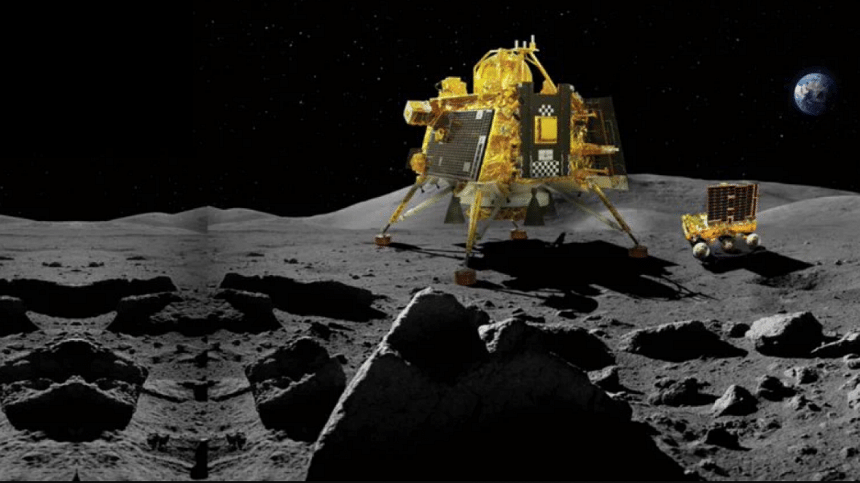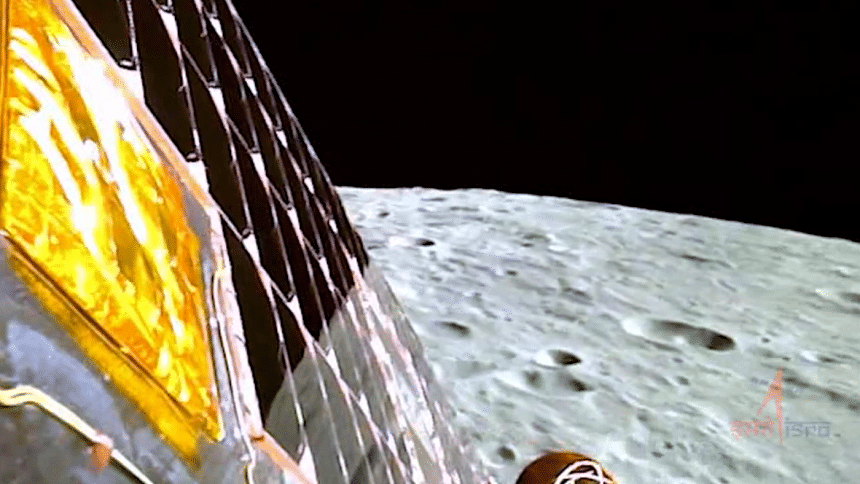How Chandrayaan-3 took India to the moon

On August 23 at 6:34 pm BDT, India's unmanned moon flight Chandrayaan-3 made history by successfully landing on the surface of the moon. This is the first time India has achieved a lunar landing via a spacecraft, with the latest mission being the third iteration of the Chandrayaan space programmes hosted by the Indian Space Research Organisation (ISRO).
As per ISRO, Chandrayaan-3 is a follow-up mission to Chandrayaan-2 that aims to demonstrate three objectives: a safe and soft landing on the moon, launch of a rover on the moon's surface, and conduct on-site experiments. With the soft landing part successfully completed, the Chandrayaan-3 lander is set to launch a rover which will begin performing necessary exploration and chemical analysis of lunar minerals.
The Chandrayaan-3 lander module is about 2 meters long and weighs 1,752 kg. The propulsion module attached to its end weighs 2,148 kg. According to a report by The Indian Express, the propulsion module was filled with 1,696.4 kg of fuel during the spacecraft's launch on July 14 this year. It is said to have 150kg of fuel left, which could allow it to remain operational for several more years. The rover, which is designed to remain operational for two Earth weeks, weighs 26 kg.

Chandrayaan-3 is designed to specifically explore the lunar south pole, an area of the moon that is abundant in frozen water, and is said to be a potential source of oxygen, fuel, and water for future lunar missions. If the rover is able to find helpful information regarding sources of usable water on the moon, it could open the path to mankind colonising the moon in the distant future.

 For all latest news, follow The Daily Star's Google News channel.
For all latest news, follow The Daily Star's Google News channel. 






Comments